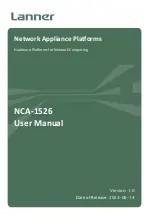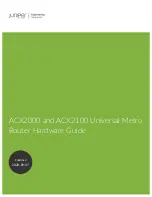
GAMMA
instabus
Technical Product Information
March 2014
IP Router N146/02
5WG1 146-1AB02
Technical Manual
N 146/02, 8 pages
Siemens AG
Infrastructure & Cities Sector, Building Technologies
Update: http://www.siemens.com
ã
Siemens AG 2014
Control Products and Systems
Subject to change without prior notice
P.O.Box 10 09 53, D-93009 Regensburg
2.11.1.13/6
Location and Function of the Display and
Operator Elements
A1
A2
A3
A4
A8
A9
A7
A6
A5
A10
Figure 4: Location of the display and operator elements
A1 LED red: indicating normal operating mode
(LED off) and addressing mode (LED on)
A2 learning button for switching between normal
operating mode and addressing mode for receiving
the physical address
A3 LED green: Operation
A4 LED yellow: data transmission on bus line (Line)
A5 LED green: Ethernet Link signal (Lk)
A6 LED yellow: Ethernet Receive signal (Rx)
A7 LED red: Ethernet Transmit signal (Tx)
Note
When the learning button (A2) is pressed, this LED
signals for 10 seconds how the IP address was
assigned to the device:
1x flashing: fixed IP address
2x flashing: DHCP
3x flashing: AutoIP
A8 extra low-voltage bus terminals (red-black)
A9 extra low-voltage terminals (yellow-white)
A10 RJ45 socket for data network cable
Mounting and Wiring
General description
The N-system DIN-rail device can be installed in
N-system distribution boards, surface or flush mounted,
or on any DIN rail complying with EN 60715-TH35-7,5.
The connection to the bus line is established via the bus
connector terminal (red-black) on the top side.
The RJ45 socket on the device front side provides the
connection to the Ethernet-IP data network.
Mounting DIN-rail devices (Figure 5)
-
Slide the device (B1) onto the DIN-rail (B2) and
-
swivel back the device until the slide clicks into place
audibly.
Dismounting DIN-rail devices (Figure 5)
-
Remove all connected wires,
-
press down the slide (C3) with a screw-driver and
-
swivel the device (C1) from the DIN-rail (C2).
B1
C1
C2
C3
B2
Figure 5: Mounting and dismounting a DIN-rail device
Slipping off bus connection blocks (Figure 6)
-
The bus connection block (D2) is situated on the top of
the device (D1).
-
The bus connection block (D2) consists of two
components (D2.1 and D2.2) with four terminal
contacts each. Take care not to damage the two test
sockets (D2.3) by accidentally connecting them to the
bus cable or with the screw-driver (e.g. when
attempting to unplug the bus connection block).
-
Carefully put the screw-driver to the wire-inserting slit
of the bus connection block's grey component and
pull the bus connection block (D2) from the device
(D1).
Slipping on bus connection blocks (Figure 6)
-
Slip the bus connection block onto the guide slot and
-
press the bus connection block (D2) down to the stop.


























